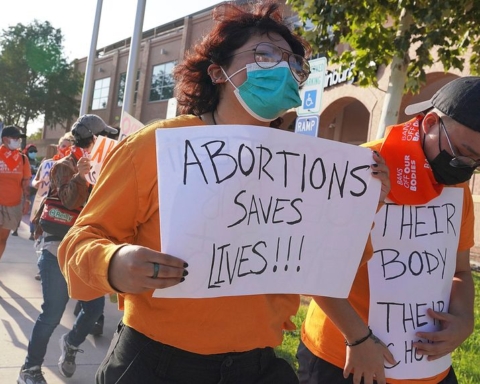As we overcome this horrific pandemic an situation. World we as human beings an as not only as Americans but as a nation we came together as far social awareness. Coming together an staying inside to slow down this Plague, an coming up with an vaccination for everyone. But as we overcome one plague, another one rises. “Delta Variant” this new advance plague which mutated from the “COVID-19” virus.
Uc Davis Health States:
1. Delta Variant is highly contagious
As of July 22, nearly 80% of UC Davis Health patients who tested positive for COVID-19 had the Delta variant. According to the CDC during the same week, the Delta variant accounted for more than 80% of new cases in the U.S. Health experts say it’s typical for a new strain of a virus to be more contagious because it often becomes much more efficient and easily transmitted.
2. Delta variant symptoms are the same
The symptoms of the Delta variant appear to be the same as the original version of COVID-19. However, physicians are seeing people getting sicker quicker, especially for younger people. Recent research found that the Delta variant grows more rapidly – and to much greater levels – in the respiratory tract.
Typically, vaccinated people are either asymptomatic or have very mild symptoms if they contract the Delta variant. Their symptoms are more like those of a common cold, such as cough, fever or headache, with the addition of significant loss of smell.
Learn how to schedule your COVID-19 vaccine at UC Davis Health
3. Delta variant is affecting unvaccinated people more
Most patients hospitalized at UC Davis Medical Center are people who have not received the COVID-19 vaccine. Nationally, 97% of patients hospitalized with COVID-19 are unvaccinated, as of July 22. Vaccines are highly effective at preventing COVID-19 infection and are also effective in fighting against the Delta variant.
In California and across the U.S., data shows that areas with lower vaccination rates tend to have higher COVID-19 infection rates. Health experts urge that COVID-19 vaccines work to prevent severe disease, which may be fatal.
4. Breakthrough cases for vaccinated people are rare, but do happen
When a vaccinated person tests positive for COVID-19, most either have no symptoms or have very mild symptoms, and it rarely results in hospitalization or death. Their symptoms are more like those of a common cold, such as cough, fever or headache, with the addition of significant loss of smell.
As of July 22, there were 65,000 breakthrough cases (or people who are vaccinated but got COVID-19) among the 160 million people who are fully vaccinated. That’s 0.04% of vaccinated people reporting breakthrough cases. No vaccine is 100% effective. With the COVID-19 vaccines averaging about 90% efficacy, health experts expect about 10% of those vaccinated could be infected.
5. Delta variant could be catastrophic in some communities
In communities with lower vaccination rates, particularly rural areas with limited access to care, the Delta variant could be even more damaging. This is already being seen around the world in poorer countries where the COVID-19 vaccine isn’t as accessible. Health experts say the impact could be felt for decades to come.
Learn more about UC Davis Health’s efforts to care for and vaccinate underserved communities
6. Many unvaccinated patients with COVID-19 wish they had gotten the vaccine
UC Davis Health physicians have noted that a number of younger patients, when they come in with critical illness, say that they wish they would have gotten the COVID-19 vaccine. Many patients have told their physicians, “Why did I not get the vaccine?” or “Why did I not listen?”
7. Some experts are recommending to wear masks, even if you’re fully vaccinated
Many health experts across the country are wearing masks themselves even though they’re fully vaccinated against COVID-19. They’re also advising vaccinated people to avoid large gatherings and mask up indoors where the vaccination status of other people is unknown.
8. More COVID-19 variants are likely to come
The Delta variant is currently the most prominent strain of COVID-19, but the Lambda variant out of South America is also emerging. Health experts urge that if people want to get back to normal, a significant portion of the population needs to be vaccinated. As long as a chunk of people across the world are unvaccinated, new strains of the virus will continue to develop and cause problems.
So my question is, “is this really a time to open back up school?
Well according to, Healthy children.Org, there are new proper
Requirements an proper procedures for schools can open up. An make a safe, clean environment for parents an students.
Healthy children.Org School Guidelines An Procedures:
Steps to keep students as safe possible in school
To ensure students and staff can stay healthy—and physically together in school—here are key safety recommendations :
COVID-19 vaccines
All adults and children over age 12 currently eligible for COVID-19 vaccines should get fully immunized by the start of school year. People are considered fully vaccinated 2 weeks after their second dose in a 2-dose series such as the Pfizer or Moderna vaccines, or 2 weeks after a single-dose vaccine such as Johnson & Johnson’s.
Face masks
Everyone over age 2 years should wear face masks that cover the nose and mouth. This is a simple, proven tool to protect students unable to get the vaccine yet or who have chosen not to get it.
When they fit well and are worn correctly and consistently, face masks are effective and safe to wear for long periods of time such as during the school day. The vast majority of children, even those with medical conditions, are able to safely and effectively wear face masks with practice, support and role-modeling by adults. Talk with your child’s pediatrician about certain medical and developmental conditions that would prohibit mask use.
Physical distancing
Students should remain at least 3 feet apart within classrooms when possible. In general, CDC recommends people who are not fully vaccinated maintain physical distance of at least 6 feet from other people who are not in their household. However, several studies from the 2020-2021 school year show low COVID-19 transmission levels among students in schools that had less than 6 feet of physical distance when the school used other prevention strategies, such as the use of masks.
When possible, schools should use outdoor spaces and unused spaces for instruction and meals to help with distancing. Activities like singing, band and exercising, for example, are safest outdoors and spread out.
Classroom routines
To help limit student interaction outside the classroom, schools should consider:
- Having teachers move between classrooms, if possible, rather than having students fill the hallways during passing periods. Block schedules (fewer classes in a given day and electives in shorter time periods) can help limit cross-over of students and teachers.
- Allowing students to eat lunches at their desks or in small groups outdoors instead of in crowded lunchrooms. Because of the need to remove face masks while eating, it’s best to keep unvaccinated students six feet apart during lunch.
- Leaving classroom doors open to help reduce high touch surfaces such as doorknobs.
- When the weather and air quality allow it, open windows and doors to improve air circulation. Strategically located fans, promoting circulation or decrease in stagnant air, can be utilized to enhance outdoor air circulation.
Testing
The CDC recommends screening testing be offered to students who have not been fully vaccinated when there are higher levels of COVID-19 cases in the community. Testing screening can also offer added protection for schools that are not able to provide optimal physical distance between students. Screening testing should be offered to all teachers and staff who have not been fully vaccinated. To be effective, the screening program should test at least once per week, and rapidly (within 24 hours) report results.
Diagnostic testing is recommended when someone has COVID-19 symptoms, or recent known or suspected exposure to the virus.
Temperature checks
Taking students’ temperatures at school may not be feasible. However, families should monitor students’ health and keep them home if they have a fever of 100.4 degrees F or greater or any signs of illness.
Exposure
Children appear less likely than adults to have symptoms and severe illness from COVID-19. Early studies also suggest those under age 10 may be less likely to be infected with and spread the infection. But, especially with new virus variants circulating, schools still need to plan for exposures.
If a student or staff member has close contact with someone with known to be infected with SARS-CoV-2, they should quarantine as recommended by local public health officials unless they are fully vaccinated. A person is known to be infected if they have a confirmed infection or illness consistent with COVID-19. Quarantine is typically at least 10 days from the last exposure or 7 days from last exposure with a negative test at least 5 days after exposure.
Symptoms at school
School nurses should take the temperature of anyone who feels ill during the school day. There should be a specific area to separate or isolate students who don’t feel well. To stay safe, school nurses should use PPE (personal protective equipment) such as N95 masks, surgical masks, gloves, and face shields.
- Cleaning, disinfecting & hygiene. Schools should follow CDC guidelines on proper disinfecting and sanitizing classrooms and common areas. Students and staff should be encouraged to wash hands with soap and water or use hand sanitizer regularly.
- Ventilation. Schools should improve air flow as much as possible by opening windows and doors. Child-proof fans can help improve ventilation and blow potentially contaminated air out.
Buses, hallways and playgrounds
Since these are often crowded spaces, schools can:
- Give bus riders assigned seats and require them to wear a face masks while on the bus. Encourage students who have other ways to get to school, including walking or biking, to use those options.
- At school, mark hallways and stairs with one-way arrows on the floor to cut down on crowding in the halls. Assign lockers by group or eliminate use of lockers.
- Encourage outdoor activities such as using the playground in small groups. Playground equipment should be included in cleaning plans.
Other considerations
In addition to safety plans, there are other factors that school communities need to address:
Students at higher risk
Some students with chronic, high-risk medical conditions may need extra accommodations to stay safe. Talk with your pediatrician and school staff (including school nurses) to explore options for return to school, whether in person, blended, or remote.
Students with disabilities
School reopening plans may have a greater impact on students with disabilities. It may be hard to transition back to in-school learning after missing out on instruction time. Or they may have had less access to school-based services such as occupational, physical and speech-language therapy or mental health support counseling. Schools should review the needs of each child with an Individualized Education Program (IEP) before they return to school, and provide services even if virtual.
Immunizations and wellness exams
It is especially important for students to be up-to-date on all their immunizations, including the flu vaccine, during the pandemic. Doctors saw a drop in routine childhood immunizations during the pandemic. Getting caught up will avoid outbreaks of other illnesses that threaten to keep children home more.
Behavioral health and emotional support
Your child’s school should be prepared to support a wide range of mental health needs during the pandemic. This includes recognizing signs of anxiety or distress. Students may be grieving loved ones lost to COVID-19, for example, or feeling the stress of lost family income. The United States experienced more than 600,000 deaths from COVID-19. On average, each of these deaths impacts 9 people, and many of these 5 million grieving individuals are children. Schools also can help students with suicidal thoughts or behavior get needed support.
Organized activities
Sporting events, practices, and other extracurricular activities may be limited in many areas. In schools that do offer sports and other physical activities, special safety steps should be considered.
Screenings
Vision and hearing screening should continue in schools, when possible. These services help identify children in need of treatment as soon as possible so sight or hearing problems don’t interfere with learning.
Nutrition
Many students receive healthy meals through school meal programs More students might be eligible for free or reduced meals than before the pandemic. Schools should provide meal programs even if the school is closed or the student is sick and stays home from school.
Why safe, in-person school is so important
Schools provide more than just academics to children and adolescents. In addition to reading, writing and math, students learn social and emotional skills, get exercise, and have access to mental health and other support services. For many families, schools are where kids get healthy meals, access to the internet, and other vital services.
The pandemic has been especially hard for children with disabilities, children living in poverty, and children who are Black, Hispanic/Latino, and American Indian/Alaska Native. In an April 2020 survey, more than half (59%) of parents with lower incomes who had children in schools that were remote because of the pandemic said their children would likely face at least one of three obstacles to digital learning: lack of reliable internet at home, for example, no computer at home, or needing to use a smartphone to complete schoolwork.
With the safety procedures in routines in place I must say I agree with the safety precautions an recommendation that are set in place. But are these procedures an recommendations an routines safe enough for you? Do you as parents feel comfortable dropping your children off at school? Or do you feel this new mutated virus is too fresh to determine that?
Written by LaLa💋
Instagram: official_lala_baby_






